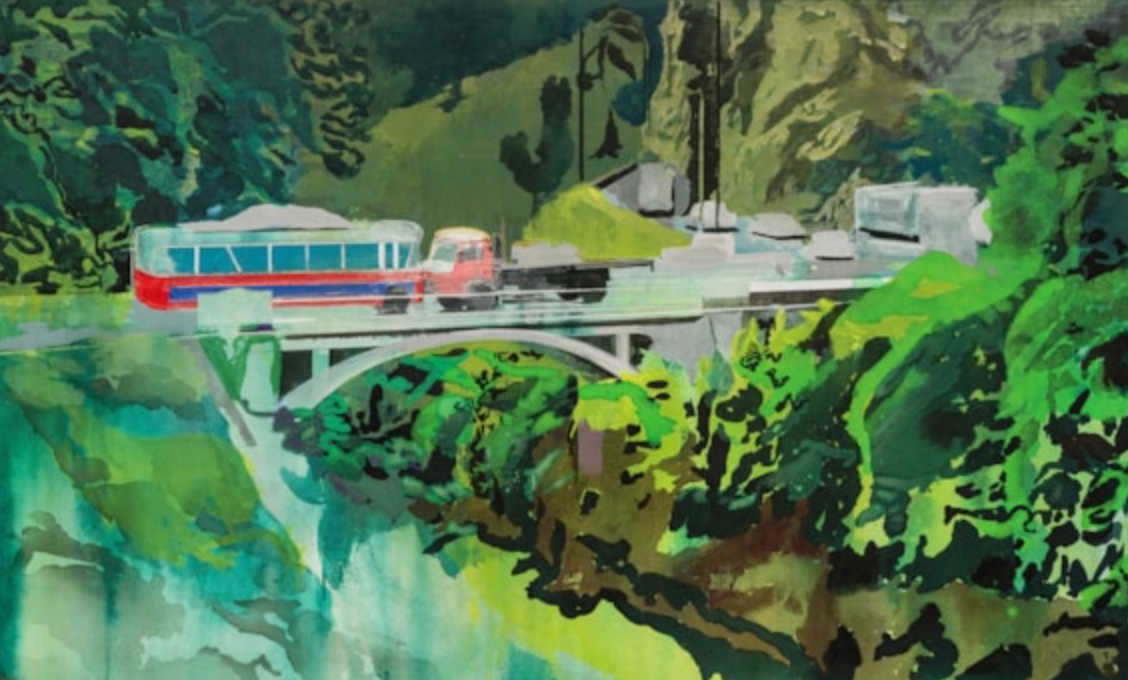In an exclusive portfolio for Document Journal’s Spring/Summer 2024 issue, the artist merges the present, past, and possible
The looping braids rising atop Shahzia Sikander’s figures appear like the curls winding over Buddha’s sculpted head, like early-20th-century Nigerian crest masks, like the horns of a ram. When she was realizing the bronze figurative sculpture NOW to top off the Appellate Division of the New York State Supreme Court building on Madison Avenue, Sikander also had in mind the arms of the judge’s chairs and the friezes of its façade for the hairpiece. The scaffolding-like skirt on Witness, a nearby monumental sculpture in Madison Park, echoed the courthouse’s stained-glass dome. When the pair of female figures were slated to travel to Houston in February, reactionaries saw instead “Satanic abortion idols.” The exhibition was canceled, censored.
“Societies are not static, nor histories one-dimensional. Art is alive, moving and changing.”
For over three decades, the Lahore-born, New York-based artist has developed a visual language encompassing global historic and contemporary art, architecture, dress, and manuscript painting, as well as visions from dreams and her own experiences. These images proliferate through her work, transmuted through painting, sculpture, drawing, video, glass, and printmaking. This spring, Sikander is presenting a retrospective titled Collective Behavior during the Venice Biennale, which will subsequently travel to the Cincinnati Art Museum and the Cleveland Museum of Art. Whether seen as part of a total experience as in the solo exhibition or as a lone object, each piece by Sikander luxuriates with interpretations—symbols personal and cross-cultural that at once pique and challenge recognition.
“Societies are not static, nor histories one-dimensional,” Sikander writes. “Art is alive, moving and changing.” Venice is a prime example. Any claim to a singular “Venetian” Renaissance identity is belied by looking towards the exchange networks across the Mediterranean, China, and Persia. With a critical awareness of these connectivities, Collective Behavior situates Sikander’s past and new work in a kind of “in-between” where the real and mythic flurry.
Braid-horns and skirts, lotuses and root-like webs recur throughout Sikander’s oeuvre, differently oriented in shifting visual contexts. Sikander’s constant return to, and revitalization of, these motifs reflect her process. Drawing is her tool for thinking, she explains, whether for works on paper or the sculptures iterated between sketches, 3D prints, and human-scale forms. In her work, drawing becomes diachronic: motion captured as image. If drawing is ideation, then the medium is not drawing, but time itself.
Sikander gained prominence in the late 1980s and early ’90s by reinterpreting imagery from South and Central Asian painting and book arts, much of which had been dispersed and fractured when colonial powers sliced apart folios to distribute them in Western museums and private collections. Her practice isn’t an act of recovery, but rather cuts to the core of crafting images: creations that endure with such liveness that they can be rehewn for the present, so forceful that antifeminist protestors can’t bear to see them. These cultural conservatives are clearly not threatened by anything one-to-one: Sikander’s figures don’t represent abortion rights. Rather, the censorial protesters are frightened by the resolute looking Sikander’s work demands. In order to see these pieces, you have to shed familiar perspectives. “If you’re looking at multiple vantage points when you create work, you’re cognizant of the pitfalls of binaries,” she explains to me in one of our several far-reaching conversations on her practice. “You can ask, ‘How do I complicate assumptions? How do I loosen them up?’”
Sikander’s multifarious images deny viewers the ease of a single interpretation. In their complication of assumptions, they tap into the resonant openness that allows works of art, like those she so often pulls upon, to endure for millennia. They challenge the viewer to perceive, and thus think, beyond the present. This is a process that happens through history, through time. Though her works are self-referential, they are not self-contained; they do not deny their context, but intervene upon it. In one print, hair curves towards us in metallic spirals, a gesture, a loop. Time turns to form. Motifs tremble. Mythologies shapeshift. To do the looking Sikander’s work invites is to see the world thrum.











